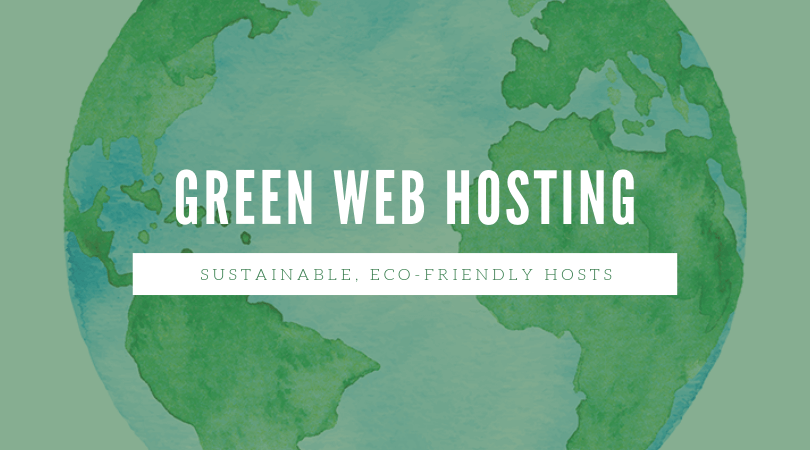The internet is growing exponentially. From its fledgling days as plain text, it has evolved into various multimedia formats, including audio and video. This content is hosted on servers, which for the majority, are housed in data centers. These data centers have to keep their servers cool and the environment controlled. As a result, they use up a lot of energy and give off a lot of carbon dioxide. The Environmental Research Letters estimates that data centers in the US use about 135 billion kWh. To give you an idea of what that means, it’s equivalent to about 31 million cars driving once around the world.
Green web hosting is the term used to designate web hosts that actively work to alleviate the impact data centers have on the environment. However, even the biggest web hosting companies only take up a small portion of a data center. Therefore, they can’t make direct demands of the data center regarding eco-friendliness. Luckily, there are other ways that they can mitigate the environmental impact.
The primary way that green web hosting companies reduce their impact on the environment is through renewable energy or carbon offsets. Renewable energy comes from naturally occurring resources. This includes wind, sunlight, and water. Ideally, these hosts would ask their data centers to use renewable energy. However, since this isn’t feasible, they purchase Renewable Energy Certificates (RECs) or Renewable Energy Credits.
RECs are produced by companies that specialize in the creation of renewable energy. The certificates’ cost goes towards covering operational costs of renewable energy centers and investing in additional green initiatives. Therefore, when a web host purchases these certificates, they help generate renewable energy for the grid.
Another way that green web hosting companies helps the environment is through carbon offsetting or VERs. When hosts fund VERs, they are supporting projects that reduce greenhouse gas emissions.
So although these companies aren’t directly protecting the environment, they are doing their best to offset their data centers’ impact. You can help by choosing a green web host to host your website.
How to Tell if Your Web Host is Green
The easiest way to know whether the web host you’re using is green is to visit their website. Most hosts will state loudly and proudly if they are green. The amount of information they provide about their green initiatives is usually a reflection of their investment in said initiatives. Some companies, like GreenGeeks, have even built their business models around being green. GreenGeeks even offers their customers “green” badges to show that they are using an environmentally friendly host.
Green Web Hosting Companies
- GreenGeeks
GreenGeeks uses RECs to offset the energy used by their data centers. They purchase RECs for three times the energy they consume. Additionally, they use energy-efficient hardware in their servers.
- A2 Hosting
A2 Hosting uses VERs. They have partnered with Carbonfund.org to purchase carbon offsets, and this allows Carbonfund to invest in sources of clean, renewable energy sources around the globe.
- HostPapa
HostPapa buys RECs to power their data centers, web servers, and even their office computers. In particular, they support solar and wind energy for reducing their carbon footprint.
- Acorn Host
Acorn Host uses RECs to cover the energy usage of their data centers and their offices. Additionally, they try to only work with data centers that are eco-friendly. This includes centers such as ServInt and Liquidweb. These data centers utilize low-voltage servers, recycle hardware components, and contribute to reforestation projects.
- DreamHost
DreamHost uses data centers that provide cooling plants that use partially reclaimed water for their high-efficiency cooling. These centers are also partners in state-level “clean wind” programs that run on electricity from renewable sources. They also purchase RECs.
- EcoHosting
EcoHosting purchases VERs and invests in reforestation projects. They also support a wide variety of conservation efforts.
Conclusion
The internet is hosted on servers that are stored in data centers. These data centers consume over 135 billion kWh of electricity. As you can imagine, this has a severe impact on the environment. In an ideal world, data centers would be actively working to reduce their impact on the environment. Unfortunately, that’s not the case, which is where green hosting comes in. Green hosting is web hosting that seeks to offset the environmental impact of hosting by purchasing RECs or VERs. Therefore, by choosing to use a green web host, you are also playing a part in helping the environment.


